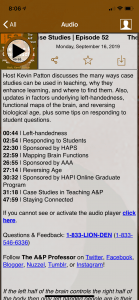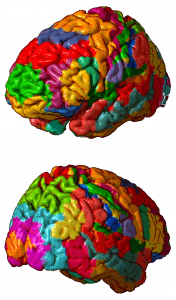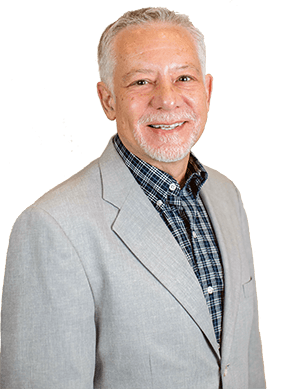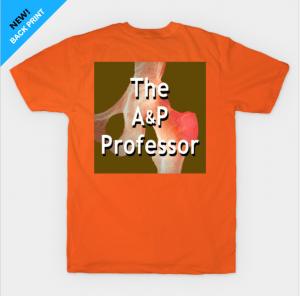Host Kevin Patton summarizes many strategies from learning science that can amplify learning in our courses. Also, updates in the role of exosomes in the spread of cancer and how activity type affects the shape of our heart.
00:48 | Jargon: Show Notes & Episode Pages
05:07 | Sponsored by HAPS
07:01 | Role of Exosomes in Spread of Cancer
13:20 | Sponsored by AAA
13:44 | Activity Type Affects Heart Shape
18:03 | Sponsored by HAPI Online Graduate Program
18:35 | Amplifying Learning in A&P: ANSWER
53:30 | Staying Connected
If you cannot see or activate the audio player click here.
Questions & Feedback: 1-833-LION-DEN (1-833-546-6336)
Follow The A&P Professor on Twitter, Facebook, Blogger, Nuzzel, Tumblr, or Instagram!
Give the pupils something to do, not something to learn; and the doing is of such a nature as to demand thinking; learning naturally results. (John Dewey)
1 | Jargon: Show Notes & Episode Page
4 minutes
Kevin explains that show notes are notes and links related to an episode.
You are reading the show notes right now!
The episode page is a page dedicated to an episode at theAPprofessor.org and it contains the show notes, which may also be available in the podcasts or radio app where you listen to episodes.

2 | Sponsored by HAPS
2 minutes
The Human Anatomy & Physiology Society (HAPS) is a sponsor of this podcast. You can help appreciate their support by clicking the link below and checking out the many resources and benefits found there. There are a bunch of 1-day regional workshops scattered all over the continent. There's probably one near you coming up this year (or next)!
- Cleaning Anatomical Models with Denture Tablets (blog post by Carol Britson) my-ap.us/2Qn9FnP

3 | Exosomes & Metastasis
6.5 minutes
Extracellular vesicles (EVs) such as exosomes and oncosomes play important roles in spreading cancer. For example, exosomes play a role in the metastasis of breast and lung cancer, through the blood-brain barrier (BBB) to the brain tissue. We are still working out the mechanisms.
- Sneaky Spread: How breast cancer uses exosomes to breach the blood-brain barrier (news summary) my-ap.us/2QjS5Rw
- Brainwashed by extracellular vesicles: the role of extracellular vesicles in primary and metastatic brain tumour microenvironment (review article) my-ap.us/2QkDoxv
- What are Oncosomes? (description) my-ap.us/2Qj3PUf

4 | Sponsored by AAA
0.5 minutes
- A searchable transcript for this episode, as well as the captioned audiogram of this episode, are sponsored by the American Association for Anatomy (AAA) at anatomy.org.

5 | Activity & Heart Shape
4.5 minutes
Evolution has played a role in making human hearts similar to chimpanzee hearts. The left ventricle is thick-walled and short—best suited for shorter and perhaps intense bursts of activity. However, the heart is able to elongate and have a thinner wall to adapt to a lifestyle that features endurance activity.
- Running—or sitting—can change the shape of your heart (news summary) my-ap.us/2ACm7oO
- Selection of endurance capabilities and the trade-off between pressure and volume in the evolution of the human heart (research article) my-ap.us/2AEbvpO
- " the human (LV) evolved numerous features that help to augment stroke volume (SV), enabling moderate-intensity EPA. We also show that phenotypic plasticity of the human LV trades off pressure adaptations for volume capabilities, becoming more similar to a chimpanzee-like heart in response to physical inactivity or chronic pressure loading."

6 | Sponsored by HAPI Online Graduate Program
1 minute
The Master of Science in Human Anatomy & Physiology Instruction—the MS-HAPI—is a graduate program for A&P teachers. A combination of science courses (enough to qualify you to teach at the college level) and courses in contemporary instructional practice, this program helps you power up your teaching. Kevin Patton is a faculty member in this program. Check it out!

7 | Amplifying Learning in A&P
35 minutes
In this discussion, Kevin borrows a mnemonic acronym from Yee and Boyd (cited below) that summarizes key strategies derived from learning science (cognitive psychology) and riffs on adapting it to the A&P course to amplify learning.
- How Can We Amplify Student Learning? The ANSWER from Cognitive Psychology (article from Faculty Focus) my-ap.us/2AEaIoQ
- Measuring actual learning versus feeling of learning in response to being actively engaged in the classroom (research article) my-ap.us/2AEUWd6
- There’s Been A Misunderstanding (opinion piece on what we mean by "lecture") my-ap.us/2AzHMyb
- The Distracting Draw Of Smartphones (episode of Hidden Brain podcast) my-ap.us/2AFZ6kU
- Some of the episodes mentioned in this segment
- Playful & Serious Is the Perfect Combo for A&P | Episode 13
- Storytelling is the Heart of Teaching A&P | Episode 12
- The Wallenda Model of Homeostasis | Episode 46
- Fishbowl Model of Homeostasis | Concept Lists | TAPP Identity | Episode 45
- Spaced Retrieval Practice | Episode 1
- Cumulative Testing Makes Learning Last | Episode 4
- Running Concept Lists Help Students Make Connections | Episode 8
- The Case for Transparency | Episode 51

If the hyperlinks here are not active, go to TAPPradio.org to find the episode page.
- More details at the episode page.
- Transcript available at the script page.
- Listen to any episode on your Alexa device.
- Need help accessing resources locked behind a paywall? Check out this advice from Episode 32 to get what you need! https://youtu.be/JU_l76JGwVw?t=440
Click here to listen to this episode—or access the detailed notes and transcript.












